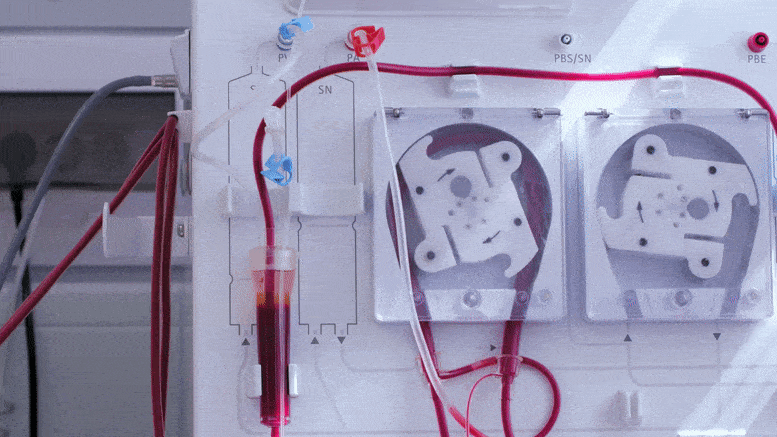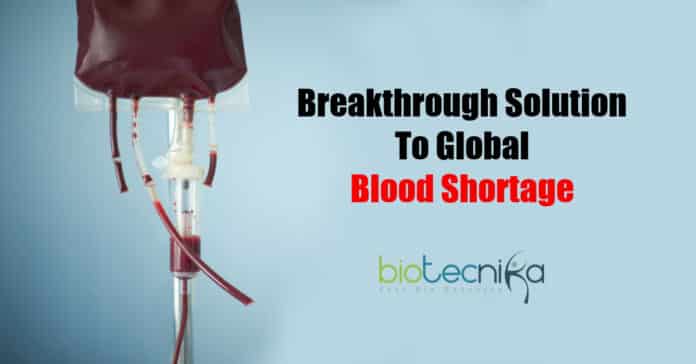Breakthrough Solution To Global Blood Shortage
A mathematical model of the body’s interacting physiological and biochemical processes suggests replacing red blood cell transfusion with transfusion of other fluids that are far less in demand may be more efficient.
Blood transfusions save lives; however, this valuable fluid is in short supply around the world. But what if blood transfusions aren’t always necessary?
A novel mathematical model of the body’s interacting physiological and biochemical processes like blood vessel expansion, blood thickening, and flow-rate variations in response to red blood cell transfusion – demonstrates that anemic patients, or those having low oxygen levels in the blood, can be efficiently treated with transfusions of more easily obtainable blood substitutes.

The study was conducted by researchers at Stanford University and the University of California, San Diego, and the study findings are released in the Journal of Applied Physiology.
Usage of a distinct fluid could also phase out an adverse effect of blood transfusion: blood usage has been shown to decrease lifespan by 6% per unit transfused per decade because of its unfavorable side effects.
Weiyu Li, a Ph.D. student, Energy resources engineering, Stanford’s School of Earth, Energy & Environmental Sciences, stated that
an alternative to real blood, a substitute that can reduce expenses and reduce the adverse effects of blood transfusion, can be used.Transfusion is a general procedure for directly transferring blood components into anemic patients. As RBCs are uniquely equipped to perform the role of carrying oxygen, they are transfused in anemic patients. However, collecting, storing, and giving the right, sanitary blood type for every patient is a time-consuming and expensive process. Furthermore, the available supply of blood falls far short of the demand: The global shortage of blood totals around 100 million units/year across the globe.
Prof. Daniel Tartakovsky, energy resources engineering, Stanford Earth, and author of the study, stated that with this method, more goods could be delivered, in this case, oxygen, with less – that is the primary idea of sustainability. It’s entirely about figuring out how to do more with less.
Red blood cell transfusions are performed to increase the probability that oxygen, which is essential for organ and tissue function, will be delivered. But as per the research, the process also thickens the blood, which can be a concern.

As per the model, blood vessels in some patients don’t dilate during transfusion, and as their blood gets thickened by added RBCs, it is more viscous and doesn’t circulate as efficiently to deliver oxygen. Presently, treating anemic patients with a 2-unit transfusion is the most commonly used transfusion quantity regardless of the state of anemia, which would decrease blood flow.
Transfusion, on the other hand, makes blood vessels dilate in many people, boosting circulation and delivering more oxygen to the body. The outcomes highlight the advantage of transfusion in patients with anemia whose blood vessels dilate during transfusion.
According to the model, either refraining from transfusion or transfusing alternative fluids called plasma expanders, which cause blood vessels to dilate, maybe a more efficient method to improve oxygen delivery. Plasma expanders are high-molecular-weight starch solutions dissolved in normal saline; they have been used in transfusion medicine for many decades and have been shown to be useful in exploratory investigations.
Prof. Marcos Intaglietta, co-author and founder of the bioengineering discipline at UCSD, stated that at the moment, blood transfusion is determined by addressing the incorrect target, specifically restoring oxygen-carrying capacity. However, the relevant target of a blood transfusion is to restore oxygen-delivery capacity.
According to the team’s predictions, safe and economic blood substitutes can reduce the overall expense of blood transfusion by tenfold while undoubtedly reducing the adverse features of the method. The model was based on earlier research on how mammals respond to blood transfusion.
Tartakovsky stated that their model identifies natural physiological processes that describe the findings of various observational research: people can avail the advantage of blood transfusion without the usage of blood. However, nothing indeed emerges from just modeling – it must be backed with observations, investigational studies, and experience.
The researchers anticipate that their study outcomes will lead to clinical trials that will examine the efficacy of non-blood alternatives to improve oxygen delivery. According to the team, there have not been consistent outcomes from meticulous medical trials that confirm the concept that small amounts of blood are more potent than simply giving human plasma.
Li stated that this is the first model that takes into account all of these effects, and he hopes people have the opportunity to see their findings and take the decision on whether they can be used for treatment and be a solution to global blood shortage.
Also Read:
- Ph.D. Mandatory From 2023 For Assistant Professors: UGC
-
The Junk Overlooked DNA Might Solve The Mystery Of Unique Human Brain
-
Can We Predict Next Virus Spread From Animals to Humans With AI?
Download Biotecnika App for more Updates on Life Sciences, Job vacancies, CSIR-NET, GATE, and a lot more.
Keywords: Solution To Global Blood Shortage
































